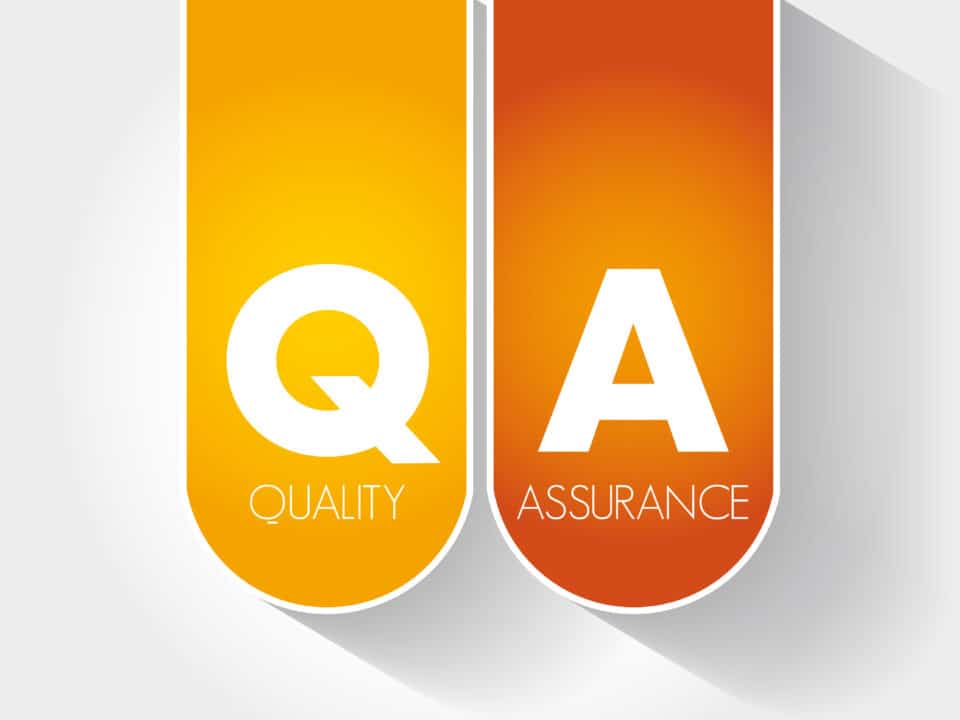
Choosing the Right Clinical Documentation Method for Your Healthcare Facility: A Brutally Honest Comparison
December 13, 2023
Common Medical Documentation Errors Clinicians Make and How Medical Transcription Services Can Help
December 15, 2023Why Healthcare Providers Are Switching to Outsourced Transcription: Real-World Use Cases and Cost Analysis
In healthcare’s ever-evolving landscape, medical professionals routinely seek ways to optimize operations, improve patient care, and manage costs. One area that often comes under scrutiny is medical transcription. Traditionally, healthcare organizations have relied on in-house transcriptionists to convert spoken medical reports into written documents. However, the trend has been shifting towards outsourcing these services for many years, and for good reason. Outsourcing medical transcription can be a more cost-effective and efficient solution for healthcare providers. In this article, we’ll delve into the various reasons why outsourcing can save you money, time, and resources, backed by real-world use cases.
The Hidden Costs of In-House Transcription
Salary and Benefits
Hiring in-house transcriptionists means paying them a fixed salary, along with benefits like healthcare, retirement plans, and paid time off. According to the U.S. Bureau of Labor Statistics, the median annual wage for medical transcriptionists was $34,730 in 2022. When you add in benefits, the cost can rise significantly.
Training and Onboarding
New employees require training, which takes time and resources. The learning curve of new staff can be steep, especially when your organization has specific medical jargon, technology, and procedures that the transcriptionist needs to understand.
Equipment and Software
In-house transcription requires specialized software, hardware, and a secure network infrastructure to maintain patient confidentiality. These costs add up over time. When you factor in the expense of upgrading technology, the cost becomes even more notable.
Turnover and Scalability
Employee turnover can be costly, requiring you to go through the hiring and training process repeatedly. Additionally, scaling up or down to meet demand can be challenging with in-house staff. According to Zippia, the median tenure for an employee in the United States is only three to four years.
The Cost-Effectiveness of Outsourcing Medical Transcription
Pay-as-You-Go Model
Outsourcing companies often operate on a pay-as-you-go model, empowering you to pay only for the services you use. This is particularly beneficial for smaller practices or during periods of low patient volume.
Expertise and Efficiency
Companies that specialize in medical transcription, like Athreon’s Trans|IT service, have the expertise to deliver highly-accurate transcripts quickly. Leveraging both AI and human editors, Trans|IT offers 99%+ accuracy for single and multi-speaker media files.
No Overheads
Outsourcing eliminates the need for dedicated office space, equipment, and software, reducing your overhead costs.
Scalability and Flexibility
Outsourcing allows you to scale your transcription needs up or down efficiently without the hassle of hiring or firing employees.
Security
Professional transcription services prioritize security, ensuring that your patient data gets handled with the utmost confidentiality. Trans|IT, for instance, is one of the most secure speech-to-text solutions in the industry.
Real-World Use Cases
Use Case 1: Small Private Practice with High Employee Turnover
A small private practice was facing a unique challenge that was draining both time and financial resources: high turnover rates among their in-house transcriptionists. The practice had a constant cycle of hiring new transcriptionists, training them, and then losing them to other opportunities within a short period. This revolving door of employees created a “constant training loop,” where existing staff and physicians had to spend valuable time onboarding new hires, only to see them leave shortly after that.

The Constant Training Loop: A Drain on Resources
Each time they hired a new transcriptionist, the practice had to allocate resources for training, which included familiarizing them with the practice’s specific medical jargon, documentation standards, and software tools. This training period often lasted several weeks, during which the new hire’s productivity was not at its peak. The constant training loop also had a cascading effect on the practice’s overall efficiency, as physicians and existing staff had to take time away from patient care to train new employees.
Financial Implications
The financial burden of this high turnover was twofold. First, there were the direct costs associated with recruiting, such as advertising job openings and conducting interviews. Second, there were indirect costs, like reduced productivity during the training period and the time taken by other employees to train new hires. When added up, these costs were significantly impacting the practice’s bottom line.
The Outsourcing Solution: Breaking the Loop
The practice decided to outsource its medical transcription needs to break this costly and time-consuming cycle. They partnered with Athreon’s Trans|IT service, attracted by its reputation for providing highly accurate, fast, and secure transcription services. The transition was smooth, and the practice was immediately relieved of the burdens associated with hiring and training in-house transcriptionists.
Results: Cost Savings and Improved Efficiency
After making the switch, the practice found that they were able to save approximately 30% in annual transcription-related expenses. These savings were not just from eliminating salaries and benefits for in-house staff, but also from eradicating the hidden costs associated with high turnover and constant training. Moreover, the practice was now benefiting from Trans|IT’s 99%+ accuracy rate for transcriptions, ensuring high-quality medical records.
By outsourcing their medical transcription, the small private practice was able to escape the constant training loop and its associated costs, allowing them to focus more on patient care and less on administrative hassles. This real-world example underscores the cost-effectiveness and efficiency gains that can be achieved through outsourcing, making it an attractive option for healthcare providers facing similar challenges.
Use Case 2: Large Hospital Struggling with Productivity Minimums and Report Backlogs
A large hospital with a bustling in-house transcription department faced a multifaceted challenge affecting its operational efficiency and bottom line. One of the most pressing issues was that salaried transcriptionists consistently failed to meet productivity minimums. This led to delays in report processing, resulting in accumulating backlogs of untranscribed medical records.

The Productivity Dilemma: A Chain Reaction of Delays
The hospital had set productivity minimums to ensure that medical reports were transcribed promptly, which is crucial for patient care and medical decision-making. However, the in-house transcriptionists were often unable to meet these targets. This delayed the availability of critical patient information and had a cascading effect on other departments that relied on these reports, such as billing and insurance claims processing.
Financial Strain and Resource Allocation
The inability to meet productivity minimums was not just a workflow issue; it also had financial repercussions. The hospital was already spending significantly on salaries, benefits, and overhead costs for the in-house transcription department. The delays and backlogs added another layer of cost, leading to incentive payments for the transcription team and even the occasional need to bring in temporary staff to clear the backlog.
The Outsourcing Solution: A Turnaround Strategy
The hospital transitioned to an outsourced medical transcription model to address these challenges. They partnered with Athreon’s Trans|IT service, known for its high accuracy, speed, and security. The transition was seamless, and the hospital was immediately able to offload the burden of managing an in-house transcription team.
Results: Cost Savings, Efficiency, and Timeliness
After switching to outsourcing, the hospital experienced an estimated 40% reduction in transcription-related costs. These savings were not just from eliminating the direct costs of salaries and benefits but also from resolving the productivity and backlog issues that had been plaguing the hospital. Trans|IT’s 99%+ accuracy rate and quick turnaround time ensured that medical reports were processed efficiently, eliminating delays and backlogs. This had a positive ripple effect on other departments, streamlining billing and insurance processes.
By outsourcing its medical transcription, the hospital was able to resolve the challenges associated with productivity minimums and report backlogs, leading to significant cost savings and operational efficiencies. This real-world example highlights the multifaceted benefits of outsourcing medical transcription, making it an increasingly attractive option for large healthcare providers facing similar challenges.
Use Case 3: Surgery Center Struggling with Local Hiring and Inexperienced Staff
A mid-sized surgery center was facing a unique and challenging problem: hiring experienced local medical transcriptionists was difficult. The center performed various surgical procedures, each with specialized medical terminologies and documentation requirements. The complexity of these procedures demanded a high level of accuracy in transcriptions, which became increasingly difficult to maintain with their in-house staff.

The Local Hiring Challenge: A Talent Drought
The surgery center was in an area where skilled medical transcriptionists were in short supply. As a result, they often had to resort to hiring staff with little to no prior experience in medical transcription. This created a situation where the center had to train these new hires from the ground up, investing significant time and resources into bringing them up to speed.
The Inexperience Problem: A Cycle of Errors and Revisions
Because the new hires lacked prior experience, the center found itself caught in a cycle of errors and revisions. Transcripts often had to be reviewed multiple times to ensure accuracy, leading to delays in report availability. This impacted the center’s operational efficiency and raised concerns about the integrity of the medical records the transcriptionists produced.
Financial Strain: The Cost of Inexperience
The financial implications of this situation were twofold. First, there were the direct costs associated with the constant training and retraining of inexperienced staff. Second, the delays and errors led to operational inefficiencies, which had a cascading effect on other departments and processes within the center. When combined, these factors were taking a toll on the surgery center’s finances.
The Outsourcing Solution: A Strategic Move
To break this cycle, the surgery center outsourced its medical transcription work. They chose to partner with Athreon’s Trans|IT service, known for its high levels of accuracy, speed, and security. The transition was smooth, and the center was immediately able to focus its resources on patient care rather than administrative hassles.
Results: Cost Savings, Accuracy, and Operational Efficiency
After outsourcing, the surgery center experienced an estimated 35% reduction in transcription-related costs. The savings came not just from eliminating the salaries and benefits for in-house staff, but also from breaking the cycle of errors, revisions, and delays. With Trans|IT’s 99%+ accuracy rate, the center was able to maintain high-quality medical records without the need for constant revisions.
By outsourcing their medical transcription, the surgery center effectively solved the challenges associated with local hiring and inexperienced staff. This led to significant cost savings, improved accuracy, and better operational efficiency, making it a compelling case for the cost-effectiveness of outsourcing medical transcription services.
The Strategic Advantage of Outsourcing Medical Transcription
The challenges of managing an in-house medical transcription team can be multifaceted, ranging from high turnover rates and training costs to productivity issues and local hiring difficulties. As demonstrated through real-world use cases, outsourcing medical transcription can offer a strategic advantage by eliminating these challenges. It not only leads to significant cost savings but also ensures high levels of accuracy, security, and operational efficiency.
If you’re grappling with similar challenges in your healthcare organization, consider a more cost-effective and efficient solution. Athreon’s Trans|IT service offers a proven track record of delivering 99%+ accurate transcripts, leveraging AI and human editors to provide fast, secure, and reliable medical transcription services. With 35 years of industry experience, Athreon is a trusted partner for healthcare centers looking to optimize their operations and focus on what matters most—patient care.
Don’t let transcription challenges hold you back. Take the first step towards operational excellence by exploring Athreon’s Trans|IT service for your medical transcription projects. Contact us today to learn more.





